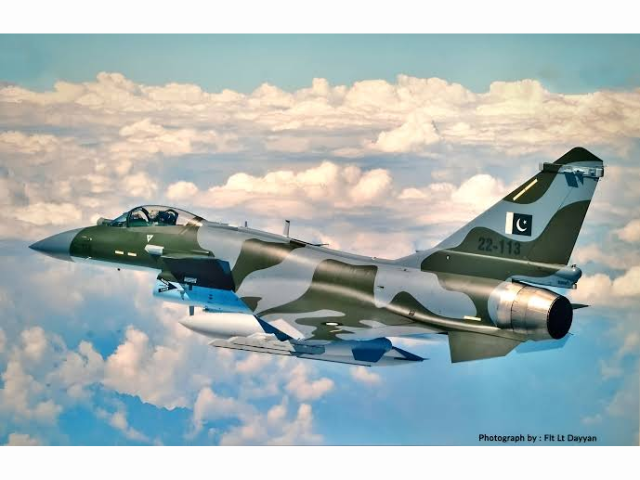Security Review Commission reports to Congress; Says Beijing’s systems helped counter Indian strikes
Pakistan’s J-10C. Photo: File
ISLAMABAD:
A report submitted to the US Congress by the US-China Economic and Security Review Commission has highlighted Pakistan’s “military success” during the four-day conflict with India in May 2025, crediting the outcome to the deployment of advanced Chinese weapons.
The commission tasked with assessing the national security implications of trade and economic relations between the United States and China delivered its findings to Congress on Tuesday. According to the document, “Pakistan’s military success over India in its four-day standoff showcased Chinese weapons,” noting that Beijing’s latest air defense systems and fighter jets were used in combat for the first time.
The clash was triggered after an attack on tourists in Indian illegally occupied Jammu and Kashmir (IIOJK), which New Delhi attributed to Pakistan without providing evidence. Islamabad denied the allegation and called for an independent investigation.
In response, India launched airstrikes against Pakistan’s Punjab province and Azad Jammu and Kashmir (AJK) in the wee hours of 7 May, leading to four days of hostilities that ended with US mediation on 10 May.
The US report noted that the confrontation marked the first active combat use of China’s modern weapons systems, including the HQ-9 air defense system, PL-15 air-to-air missiles and J-10 fighter jets operated by the Pakistan Air Force (PAF).
China reportedly used the conflict to test and promote its defense capabilities and subsequently offered to sell Pakistan 40 J-35 fifth-generation fighter jets, KJ-500 aircraft and ballistic missile defense systems in June 2025.
Pakistan first shot down five Indian aircraft, later increasing the number to seven, while claiming no casualties on its side and reporting that 26 Indian targets were hit after airstrikes on three bases. US President Donald Trump, commenting on the clash, had said that eight Indian planes were “essentially” shot down.
The report also highlighted China’s growing defense cooperation with Pakistan, noting that the country supplied approximately 82% of Pakistan’s arms imports from 2019 to 2023. It cited joint exercises such as the ‘Warrior-VIII’ counter-terrorism exercises in late 2024 and Pakistan’s participation in the AMAN naval exercises in February 2025.
New Delhi perceived these exercises as direct security threats. “India’s commentators viewed the exercises as losses in its relationship with China and as direct security threats to the country’s territorial positions,” the report said.
In addition, the commission pointed to allegations that China was exploiting the conflict to boost its arms sales, including reports that it promoted the effectiveness of its systems over French Rafales and allegedly ran disinformation campaigns using AI-generated imagery to boost the credibility of its J-35 fighter jets.
The report emphasized that while the conflict could be described as a “proxy war”, China used the engagement to advertise the sophistication of its weapons and advance its defense industrial goals, particularly amid ongoing border tensions with India. Pakistan also increased its defense budget by 20% in June 2025, raising planned spending to $9 billion despite an overall decline in the national budget.
The four-day clash represents a rare example of China’s modern weapons being deployed in live combat, underscoring both Islamabad’s dependence on Beijing and China’s strategic interest in showcasing its latest defense technology on the international stage.
(With INPUTS FROM NEWS DESK)



